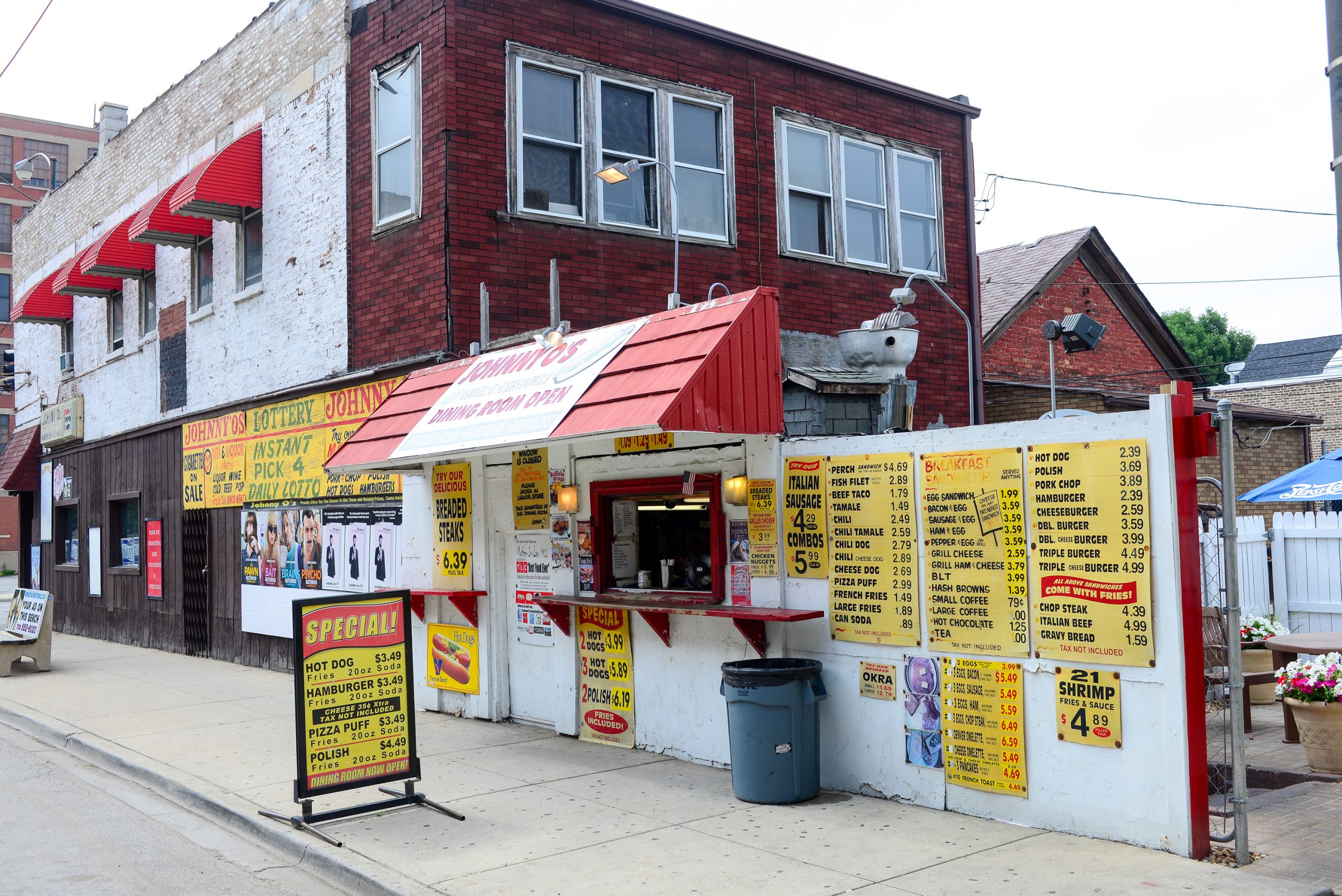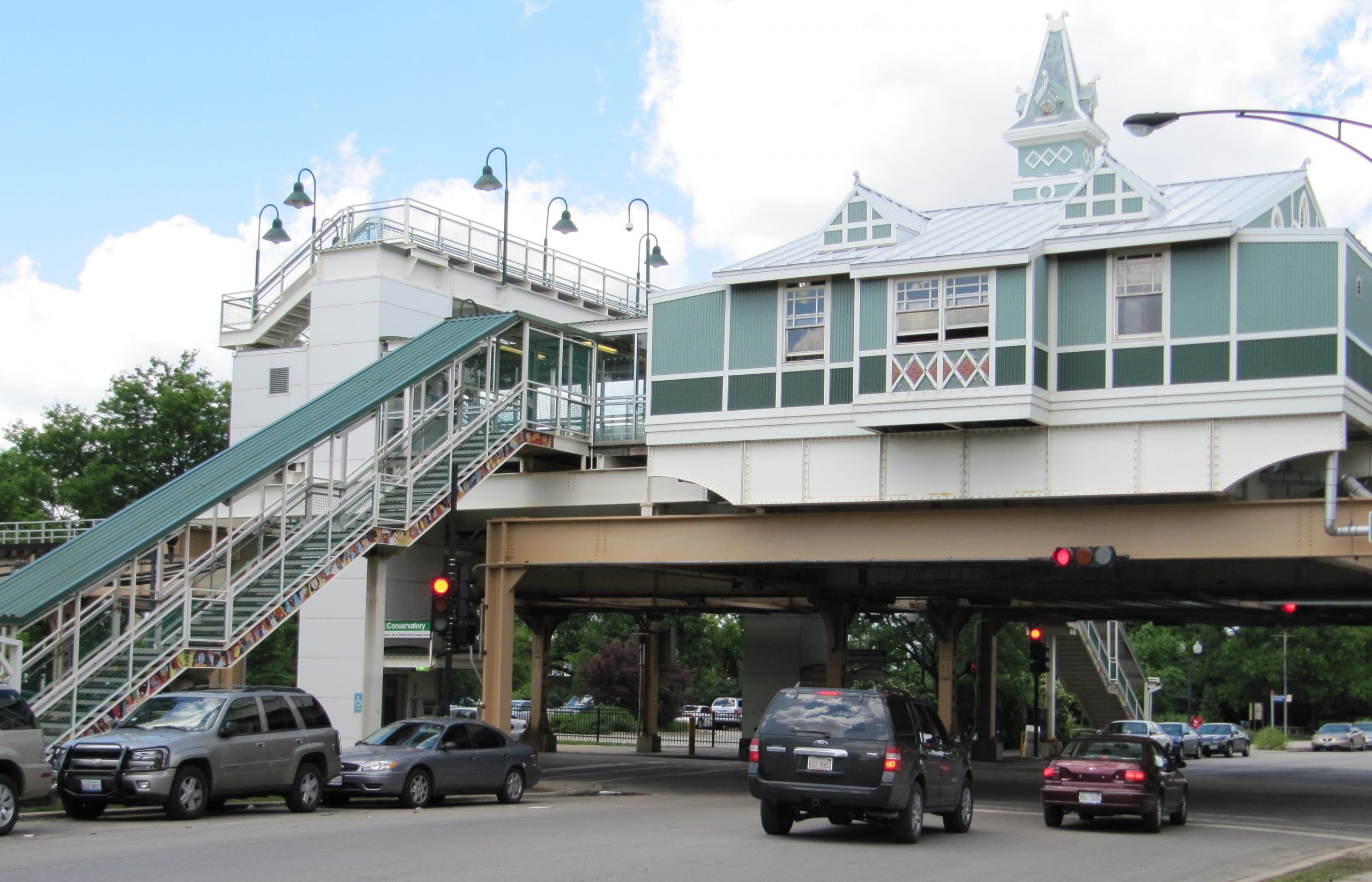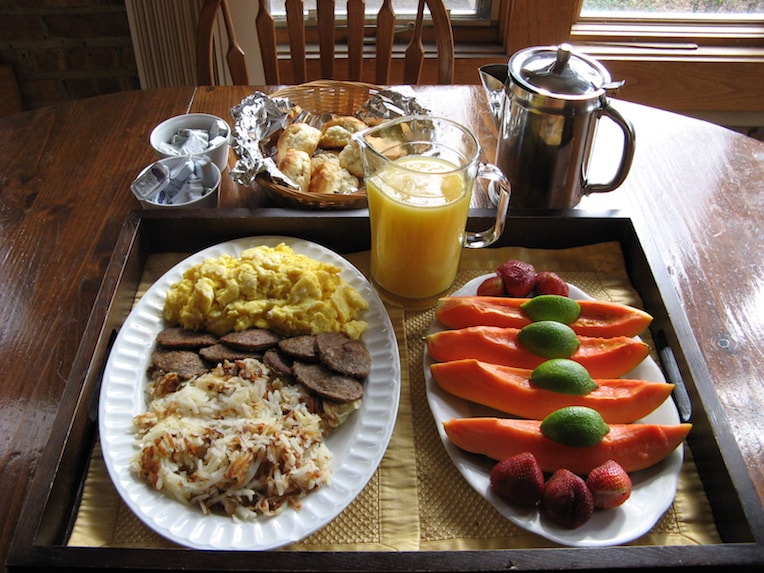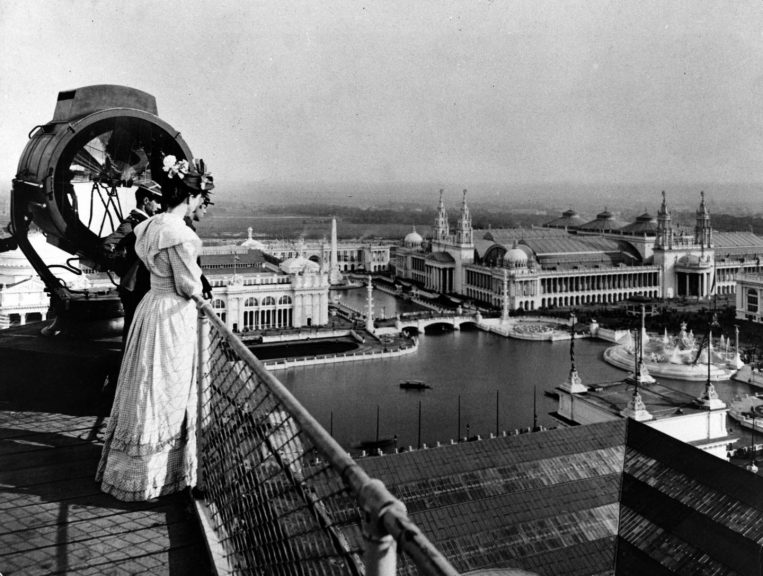We’re going to answer some questions and solve some mysteries from our Old Polonia and Wicker Park Neighborhood Tour. Sometimes our tour guides get questions from curious tour guests which stump us, despite all the research we do! Being responsible and honest folks, we never fib. Instead, we take the time to do research and discover more about Chicago history. This neighborhood tour explores the half-century of transformations which changed the old “Polish Downtown” on the Northwest Side into the hippest neighborhood around. It’s a walking tour featuring food stops, the interior of a stunning Polish cathedral and an excursion down Beer Baron Row.
On to the questions!
We research stories from Chicago history, architecture and culture like this while developing our live virtual tours, in-person private tours, and custom content for corporate events. You can join us to experience Chicago’s stories in-person or online. We can also create custom tours and original content about this Chicago topic and countless others.
Where does the name Podhalanka come from?
This question arose at the lovably old-fashioned Polish restaurant named Podhalanka which we visit for some home-cooked Polish food on the tour. Our tour guide, Marie, had a moment to ask Greg, one of the family members who runs the joint with the owner Halina, about the name. He said it’s the region of Poland the family is from. He says it’s beautiful and that we should all visit it! While that sounds very nice, searches of that term didn’t bring up any Polish regions–just our local restaurant.
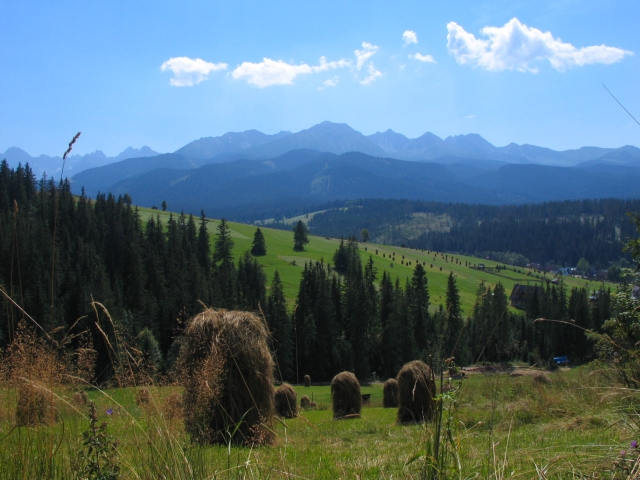
I did a bit more digging and found an answer in Whet Moser’s recent book (one of our beach reading suggestions). Moser clarifies that “Podhalanka” translates as “Girl from Podhale.” Podhale is the name of the region we’re looking for! Turns out this southern highland region, in the Carpathian Mountains, is indeed quite beautiful. Some confusion, but no lies detected! “The girl from Podhale” might therefore be Halina herself. If you haven’t met her and tried her delicious hand-made pierogies, come on our Old Polonia and Wicker Park Walking Tour (or just drop by Podhalanka, tell them we said hello!)
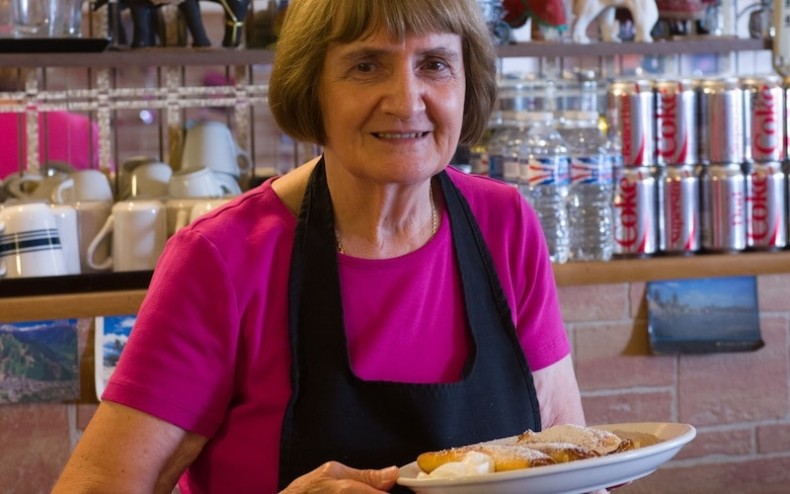
Were Wicker Park mansions, like Beer Baron Row, raised to street level?
This question arose from the below-grade workers’ cottages which tour guests see early on in the tour. Seemingly-sunken homes abound in Noble Square, which was home to working-class immigrants in the 19th century. You can spot the same thing in South Side neighborhoods like Pilsen and Bridgeport, both of which we visit on our Chicago Neighborhoods and Cultural Diversity Tour.
Chicago raised its street grade several feet during sewer construction in the late 1800s. The city built sewers at the existing ground level and then built streets atop the new embankments. The sunken buildings were typically built before the sewer construction and never raised to the new street level. Wealthier families or property owners who could afford to raise their buildings often did so, to sometimes spectacular effect.
All that being said, it does not seem that the mansions of Beer Baron Row were ever raised up. Noble Square and Wicker Park were within Chicago’s city limits all the way back in 1837. It’s a little hard to find definitive answers, but the new sewers almost certainly would have extended there by the early 1870s, when the local population boomed. The mansions were built later – the Raap House is 1879, for example. Considering the timing, and the fact that the bigwigs who built the mansions were not likely to construct them without modern sewage connections, the mansions were more likely built on landfill, not raised up.
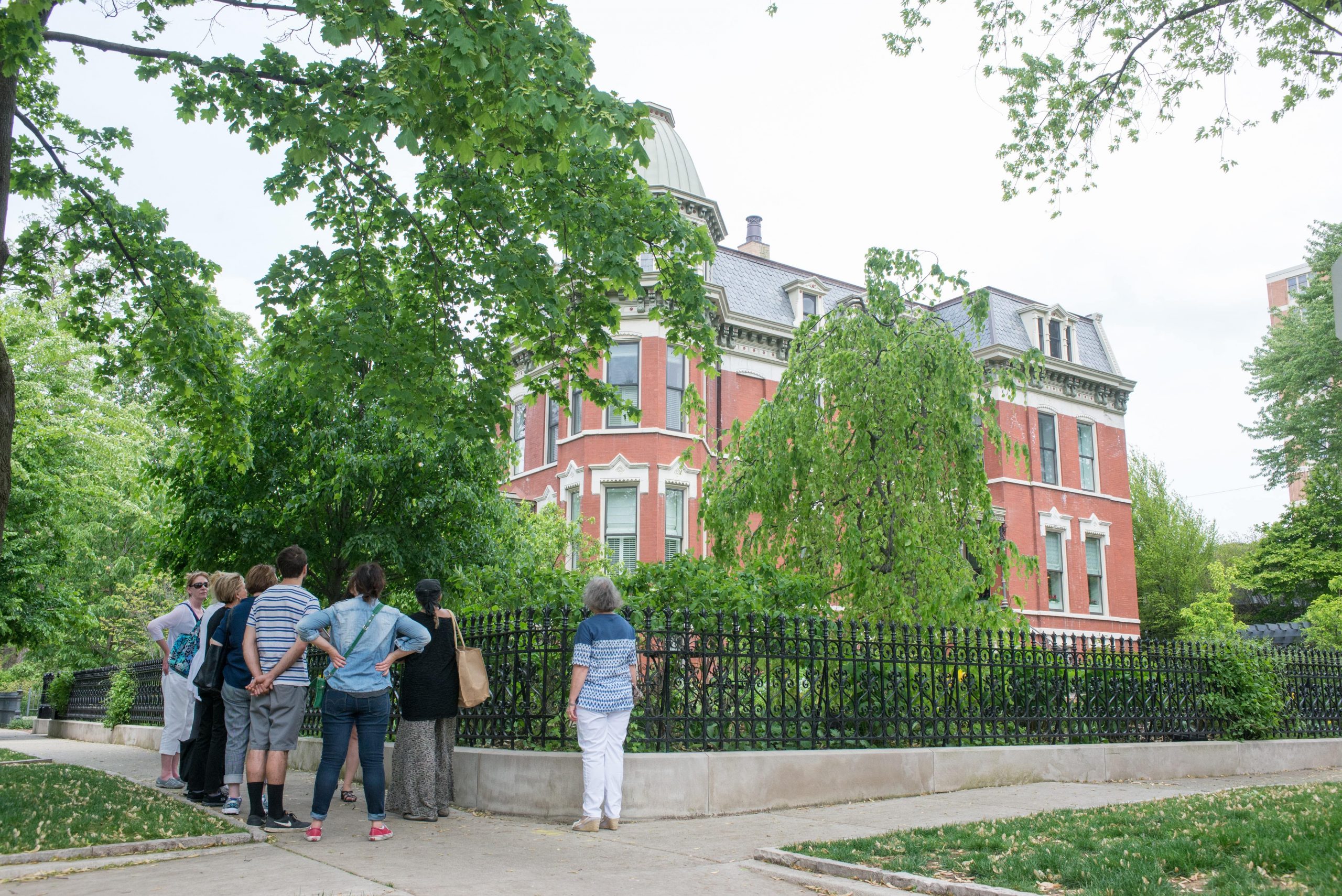
Speaking of the Raap House, its builder was murdered?! When? Where? Was it in this house? DOES HE HAUNT THIS HOUSE?!
On our Wicker Park neighborhood tour we visit and admire the Raap House. While there, guides may mention that John Henry Raap, the man who built it, was murdered. Naturally, this leads to the sort of tour questions we see above.
Raap was one of those great immigrant success stories of Chicago’s early days. He arrived here from Germany as a young man and served briefly in the Union Army. Then he became a leading retailer, especially in alcohol. By the middle of the 1870s, he had become a liquor wholesaler, saloonkeeper, and importer of fine wines. Raap was one of the most successful German businessmen in Gilded Age Chicago and held some sway over the local Republican Party.
That all came to an end on April 23, 1897. Raap accused his employee George H. Braunschweig of embezzlement and fraud. The accusation was to the tune of $2300. That’s over $70k in today’s money! In an effort to settle the case, Braunschweig offered Raap undeveloped properties in suburban Park Ridge and Kensington. Raap, perhaps overplaying his hand, insisted on either cash or Braunschweig’s own plush home. Braunschweig responded by going to Raap’s business and asking for a meeting with his accuser. He then shot Raap in the head before turning the revolver on himself. Holy Scheisse!
So we knew about the murder, but the scene of the crime isn’t featured on the tour. That structure, the Raap Block, is long gone. It stood at what’s now 906 North Milwaukee Avenue in the Noble Square neighborhood. Today, that’s the middle of the Milwaukee Avenue bridge over the Kennedy Expressway. The ghost of John Raap is more likely wandering the highway than his Wicker Park mansion.
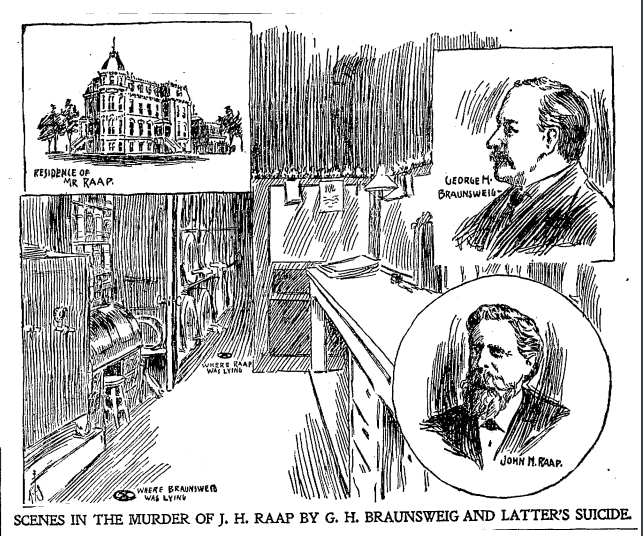
Only a Few Weeks Left for the Old Polonia and Wicker Park Neighborhood Tour!
Your chances to tour the old Polish Downtown with us in 2019 are getting pretty slim. The final Old Polonia and Wicker Park Tour with Food will be on Halloween, which is Thursday, October 31st. Much of the tour is outdoors as we explore the area around Noble Square and circle Wicker Park (the park itself, that is.) With the winds of winter starting to bite, we wrap up this and our other warm-weather tours by October’s end. So time is of the essence!
Of course, you can always sign up for our three year-round downtown walking tours (Loop Interior Architecture, Historic Chicago Walking Bar, and 1893 World’s Fair Walking Tour). We’re also bringing back our Holiday Tour of Drinks, Daleys, and Dead Guys in November and December. Make sure to think up your best questions for those tours–it’ll lead to more fun posts like this one!
– Alex Bean, Content Manager and Tour Guide
ABOUT CHICAGO DETOURS
Chicago Detours is a boutique tour company passionate about connecting people to places and each other through the power of storytelling. We bring curious people to explore, learn and interact with Chicago’s history, architecture and culture through in-person private group tours, content production, and virtual tours.

